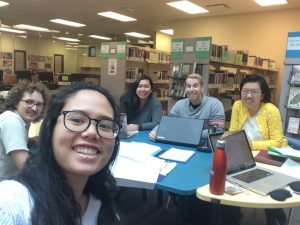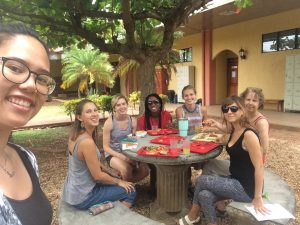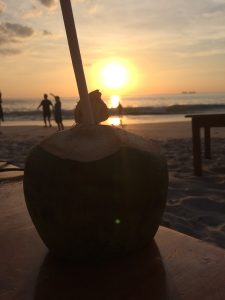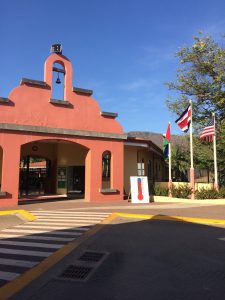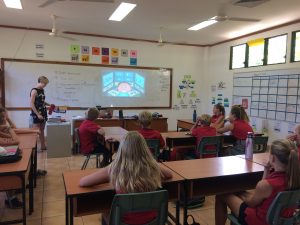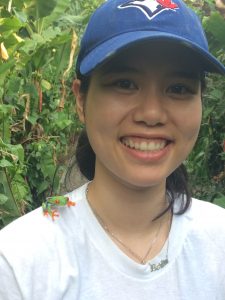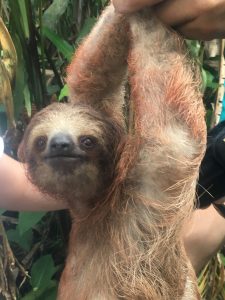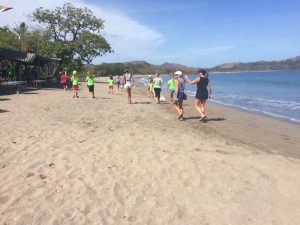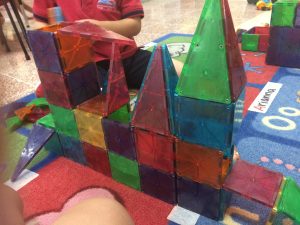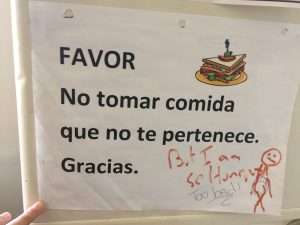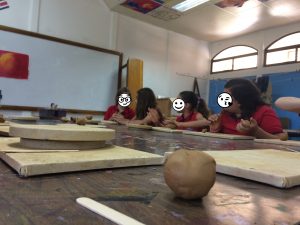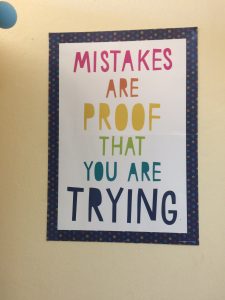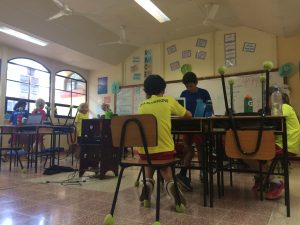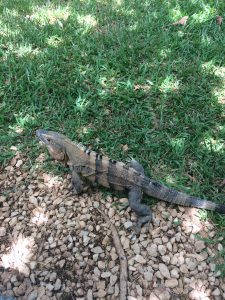Ms. Capalad’s Inquiry Proposal
Index:
Inquiry Question
Resources
Reflection
INQUIRY QUESTION
“As a foundation to talk about uncomfortable subject matter, how do we introduce the topic of white privilege in a predominantly white classroom?”
Sub Questions:
• What makes a subject uncomfortable? What is going on emotionally, when discomfort is involved?
• What activities can we use to scaffold the understanding privilege?
• How can I as a person of colour, be vulnerable with my students to create a meaningful discussion without getting too personal?
RESOURCES
• Defining “White Privilege”
Kendall, Francis E. “Understanding White Privilege .” https://www.cpt.org/files/Undoing%20Racism%20-%20Understanding%20White%20Privilege%20-%20Kendall.pdf
For this inquiry question, it is important to identify the term, white privilege. This article starts by stating that it is difficult to understand this term, especially for those who it is addressing. Privilege is a concept that revolves around the feeling of power, which can offend people who do not notice their status in society. The definition provided in the article states that it is institutional, and not a personal term. I think this acknowledging it is institutional, already eliminates a lot of problems or drawback when discussing this term in a classroom environment. “Greater access to power and resources” (1) is mentioned when defining privilege. However, how is “power” determined? Does power refer to monetary power or social power, or both?
The article continues with a section on the history of White Privilege and focuses on the concept that this term comes from a system that is created. Again, this emphasizes that it is institutional rather than a person to person based term. The article bullet points key moments in history where people of colour were suppressed for their race or when opportunities for only white people were created.
The next few sections define the various ways on how to use the knowledge of white privilege to eliminate the myths that white people might have around the term. This part is useful because it provides ways to counter these myths and why these arguments are not valid in regards to the definition of the term or given the history. This might be extremely useful for the drawback or comments that students might have when discussing this topic.
Another section of the article exclaims the need to take the idea of race seriously.
• Delano-Oriaran, Omobolade O. and Marguerite W. Parks. “One Black, One White: Power, White Privilege, & Creating Safe Spaces.” Multicultural Education, vol. 22, no. 3-4, 01 Mar. 2015, pp. 15-19. EBSCOhost, ezproxy.library.ubc.ca/login?url=http://search.ebscohost.com/login.aspx?direct=true&db=eric&AN=EJ1078762&login.asp&site=ehost-live&scope=site.
The article is about two professors who taught white privilege in white institutions. This resource is helpful because it provides a very clear example of when the topics were discussed within the school. I think this is incredibly useful because the article also focuses on the classroom climate, and emphasizing on the ideas of safe spaces. The article also discusses the resistance of students with the discussion of the topic. I found that this article is useful because of the personal stories from the teachers.
• Scheid, Anna Floerke and Elisabeth T. Vasko. “Teaching Race: Pedagogical Challenges in Predominantly White Undergraduate Theology Classrooms.” Teaching Theology & Religion, vol. 17, no. 1, 01 Jan. 2014, pp. 27-45. EBSCOhost, ezproxy.library.ubc.ca/login?url=http://search.ebscohost.com/login.aspx?direct=true&db=eric&AN=EJ1029554&login.asp&site=ehost-live&scope=site.
This article is about teachers addressing the issue of race and white privilege in theology classrooms. The article starts with acknowledging that many students come to university without knowing their racial identity or anything about racial hierarchy. It states the the classrooms they studied were predominantly white/caucasian.
This article may be a little difficult to attain information because the classrooms are in the United States, where the politics of race is quite different from a Canadian classroom. However, it does provide a narrative to what happens in a politically driven space.
This article covers these topics:
(1) the “common sense understanding of racism”
(2) “culturally entrenched racism.”
The reactions of the students within the classroom are split into two categories; “Emotional Responses,” and “Cognitive Dissonance.” In the Emotional Responses section, the article states “Students used words like “fear,” “anger,” “guilt,” “shock,” and “surprise” across a variety of assignments that asked them to respond to films or readings” From this plethora of emotional language, we distilled two emotional motifs that seem characteristic of a wide swath of students’ experiences: feelings of insecurity and feelings of frustration (31-2).
I think this article can speak on how difficult it is to bring up this topic, especially if they are feeling sensitive about the issue, or feel like it is an attack.
• “How Legos helped build a classroom lesson on white privilege.” The Globe and Mail, 17 Oct. 2017, www.theglobeandmail.com/news/national/how-legos-helped-build-a-classroom-lesson-on-white-privilege/article36610854/.
This article is about a grade 8 teacher who asked the students to brainstorm most important jobs and who in media (real or fictional) had those jobs. The teacher starred all the names on the board that were caucasian. This was her hook in order to talk about how society revolves around white privilege. The article continues on speaking about a student who thought the “Unpacking the Invisible Knapsack” activity, an activity addressing white privilege as offensive. This student stated how he’s encountered the term before, but believes it is used to “shut people down” and make people “feel bad for being white” (Lum).
The BCTF has been trying to develop a plan to be able to address issues like white privilege but has received some pushback from parents as well as other teachers. The article also mentioned universities like UBC, that address white privilege in their education classrooms and how uncomfortable students can feel when the topic is brought up.
This article was really useful in the way that it addresses a very large and difficult topic, with something familiar to the students. The article covered the high school students opinions, the pushback with other educators, UBC education students, and parents.
• “Confronting White Privilege.” Teaching Tolerance, 31 July 2017, www.tolerance.org/magazine/fall-2012/confronting-white-privilege.
“White Flight” is addresses in this article and the ideas the racial segregation. “Bursting the Bubble” is one of the sub headers of this article. This part talks about the study of Vernon Sloan, a teacher who wants to influence his students to see the “artificial line that separates the poor form the affluent” (Swalwell). The article talks about the students who are sheltered and only live within the suburbs. This article talks a lot about the gap between affluent people and people who live below the poverty line.
The second header of “Disturbing the Comfortable” talks more about a teachers approach to the privilege issue. She teaches the “historic and contemporary injustices” (Swalwell) and inspires her students with “social-action projects” (Swalwell).
The article concludes with stating that it is not easy to address these issues and that the reaction from the students depends on how the teachers frame their method of teaching the issue. The article states “ Students from a public school in a middle-class, majority-white suburb demonstrate significantly different thinking about themselves than do kids in a big city attending an expensive private school that serves a mostly upper-class white population” (Swalwell).
The article even has a “do’s and don’ts” list in the end, including the advice of “Do offer opportunities for students to “re-network” their diverse privileges with people from marginalized groups. (Provide time for students to participate in community projects related to issues of injustice.)” (Swalwell). I think this was the most important to remember in my opinion, because no mater what you teach, you have the provide an opportunity for your students to continue what they learn and interact with that concept.
“White skin privilege is not something that white people necessarily do, create or enjoy on purpose. Unlike the more overt individual and institutional manifestations of racism described above, white skin privilege is a transparent preference for whiteness that saturates our society. “
This article provides a very clear definition of white privilege in the first few paragraphs (quoted above). It states the advantages that white people have within society and states that “White privilege is a hidden and transparent preference that is often difficult to address. Only on closer inspection do we see how it creates a sense of entitlement, generates perks and advantages for white people and elevates our status in the world.” The article talks about the drawback and why white people might feel offended with the term. The article mentions that the feeling of entitlement and how that gets in the way of understanding the concept of white privilege. The article also provides multiple questions and ideas that students can think about, when trying to understand race.
This article is by Katy Swalwell who addresses the multiple ways that teachers have addressed white privilege in the classroom. One method was “bursting the bubble” which entails exposing privilege within society. The bubble refers to the suburbs, which is void from exposure of poverty, race, and the “rest of the world” (Swalwell).
• “All Activities.” Social Justice Toolbox, www.socialjusticetoolbox.com/all-activities/
This resource is an entire website of ways to bring up social justice topics in the classroom. Each activity is listed in alphabetical order and the activities list the learning outcomes and goals for the activity. What I really thought was useful with this, is the reflection questions for the activities. I think this is probably the most important part about introducing a social justice topic. Furthermore, there is a tab on the side for “further learning” which links to other resources that you can use, depending on the activity you have clicked. When I chose an activity about race, it led me to a video that was titled “A conversation with White People about Race.”
This resource toolbox is quite useful in terms of that it is quite easily accessible. It is a simple website to use and browse through. I think what it might lack is more resources and tools for teachers. However, it is overall, a fairly good resource for this inquiry question.
• Pimentel, Octavio, Charise Pimentel, and John Dean. “The Myth of the Colorblind Writing Classroom: White Instructors Confront White Privilege in Their Classrooms.” Performing Antiracist Pedagogy in Rhetoric, Writing, and Communication: 109.
The colour-blind classroom is a classroom that does not address any diversity. The article talks about the diversity approaching when teaching students writing skills. The diversity approach is compared to the colour-blind approach. The main difference is that diversity approach is about the understanding of differences. More specifically, it is about how everyone is different, and therefore the same. Being different, is what people have in common with one another. However, the article states that the diversity approach is not effective without the “deconstruction of race and white privilege” (111). The main reason to why this is necessary, according to the article, is that race becomes “a biological term,” rather than “a social construct” (111). This definition of race as a social construct, provides reference to how to talk about it within a classroom.
The article continues to address an approach to teaching writing from an antiracist point of view. Pimentel et. al, states that teachers “must avoid the common assumption that racism is a set of beliefs and practices that only ‘racist’ individuals participate in” (112) because it creates the assumption that racism is easily blamed by certain individuals.
The article is really useful with facts to consider when speaking about race. One important take-away I got from this article was about how the classroom is a place where students “do not leave their race, ethnicity, sexuality, gender or class” outside the classroom” (112).
• McIntosh, Peggy. “Unpacking the Invisible Backpack.” http://www.winnipeg.ca/clerks/boards/citizenequity/pdfs/white_privilege.pdf
This activity was popping up in various articles that I found. This is the lesson plan that has made “unpacking privilege” quite famous. The lesson activity’s objective is to allow the students to have a personal understanding of where they are in relation to their classmates and also their place in society. What backfires with this, is that if the teacher does not know how to deal with the emotional support that some students might need, it can go pretty badly. It also isolates people and puts them on the spot. The students might feel attacked for being labeled as privilege or feel shaken by realizing that they are oppressed. The main reason for this is because the activity is very public. Everyone can see what everyone else is showing, and this opens up feelings of shame, guilt etc. where students might shut down and not contribute to the conversation any longer. I do like activities like this, that might allow my students to strongly think about who they are. However, there might be other ways to teach them this, but still feel like they are emotionally safe in my classroom.
• Crosley-Corcoran, Gina. “Explaining White Privilege To A Broke White Person.” The Huffington Post, TheHuffingtonPost.com, 8 May 2014, www.huffingtonpost.com/gina-crosleycorcoran/explaining-white-privilege-to-a-broke-white-person_b_5269255.html.
This article is about the personal experience of an author in how she was taught white privilege, while living in poverty. This article focuses a lot on how privilege is a intersectionality and how that is important in addressing white privilege so that it doesn’t provide so much drawback and offense from the privileged person you are teaching. I was drawn to the title and its humour. However, I find that this article is just another article on how a white person dealt with their understanding of their white privilege. It does not speak about people of colour. I think this article speaks more to people who are having a hard time explaining to their friends about race rather than addressing it in a more educational manner. It was a fun read, but it wasn’t as useful as I would have liked it to be in terms of teaching privilege in a classroom environment.
• Pike, Graham, and David Selby. In the Global Classroom. Pippin, 2001.
This book has provided me with a lot of resources on activities I can change and manipulate to meet my learning standards. I found this to be one of the most useful resources that I found during this inquiry proposal. It is a book of various worksheets and activities that introduce different kinds of topics that are difficult to discuss in a classroom. It scaffolds the ideas slowly to any age group. One activity I am wanting to implement, as an alternative to the previous resource stated above ( Unpacking the Invisible Knapsack), is the flower worksheet. The worksheet has a flower with various petals. The student would put their name in the middle and provide some information about their race, class, etc. and determine for themselves (based on their prior knowledge) if they have more or less privilege than others in society and why. I would probably want to repeat this exercise again either on the same day, after the lesson. Or closer to the end of the unit. This way, they can see and assess themselves in what has changed since they started the unit. I like this resource because it is practical and flexible. It also has a chart in each chapter so you can easily check what kind of social justice topics overlap in which activity and why it is useful to use these activities. It shows how you can further the conversation with your students, depending on how old the students are.
• Capalad, Pamela. “White privilege doesn’t mean you’ve never had to struggle.” Medium, Medium, 27 Aug. 2017, medium.com/@brunchandbudget/white-privilege-doesnt-mean-you-ve-never-had-to-struggle-5b2633cbb151.
This resource has helped me in the past define privilege. Pamela Capalad is a writer, blogger, and financial consultant. She is also a person of colour living in America. I was hesitant on providing this as a resource, as yes, I am related to her. However, I have referenced and looked back at this blog multiple times when trying to discuss privilege with people who are sensitive to the topic. The most useful part is the understanding of the term of privilege. More specifically, the definition that “Privilege means there are a lot of things you’ve never had to think twice about that other people have to think about every day” (Capalad). I think this is the most powerful way to describe that discussing privilege is not about attacking and blaming someone or a group of people. This article helps with the understanding of empathy and how it is the main reason to why we bring up the term white privilege in the first place because everyone requires and needs empathy from others.
• TEDtalksDirector. “Listening to shame | Brené Brown.” YouTube, YouTube, 16 Mar. 2012, www.youtube.com/watch?v=psN1DORYYV0&feature=youtu.be.
As a bonus resource, Tiffany shared this video with me. At 10 minute Brené Brown, describes the importance of shame. She says “we can’t talk about race without talking about privilege, and when people start talking about privilege, they get paralyzed by shame.” She makes a really great argument about shame throughout the entire Ted Talk about how in order to be vulnerable, we need to address shame. I think during the privilege exercises that I choose to do with my students, I have to address the feelings of shame and really understand what that might feel like for my students. This is a great resource for understanding the social and emotional learning of shame and vulnerability.
REFLECTION
In the Inquiry 2 course, I learned a lot more about my question and found a lot of really interesting resources. This is my summary of the course.
My question’s wording has not changed since my first draft of my proposal, but my understanding and direction of my question has evolved. I have changed my sub-questions to match my understanding of what to do in the classroom. I’ve added the ideas of vulnerability and understanding emotions (Social Emotional Learning) of my students in order to bring these uncomfortable topics up within the classroom. I want to focus my question on the discussion and how to create a safe space for my students to share. In order to have a good discussion, I would need to focus on how to slowly introduce and scaffold topics like white privilege.
- Synthesis of and Reflection on key ideas:
What I found in my research was that it was difficult to find articles that are written by a person of colour. A lot of personal articles were describing ways in how a white person can teach and educate other white people to understand their privilege. I found a lot of ways in how people understand privilege from this perspective, which is different from my own, but I was disappointed that there was barely anything written by people of colour. According to my video resource, a big indicator for the lack of representation is shame. I found understanding shame to be extremely useful. In order to understand how to talk about uncomfortable topics in the classroom, we need to understand WHY it is uncomfortable in the first place. What about white privilege is really tough to understand or grasp our minds on, and why do certain people have more discomfort than others?
- Impact of group discussions:
The biggest impact that I have had with sharing my inquiry question with others (including the whole class) is that the conversation has started. My premise of my question is how to create meaningful discussion with students and part of my research is having these conversations with other people. I had a really rich conversation with my SA about my question and how she deals with large terms, and difficult topics in her Social Justice and English classrooms. She had a very passionate way of addressing the issues and terms. What I got from her is that, we can introduce these terms by just using them in our conversations, discussions in our lessons. We do not have to argue about the term white privilege with our students but we can have an open discussion about why these terms are important and why we should discuss it in the first place. She emphasizes that as teacher we need to provide the purpose of the lesson, and that specifically to white privilege and race, the point is not to put blame on ourselves, or the people around us. If we focus on the impact that white privilege has in our society, we provide the “so what?” to why we are discussing it, which might strip away the feelings of shame.
I am very thankful for my colleagues for being able to share their experiences with me, as well as resources that they have found. This question can get quite personal, and everyone has a very different perspective and way that they have dealt with their own privileges.
I will be teaching privilege, race, class etc. through my unit of Power, Justice, and Freedom. I have highlighted in this rough version of my unit plan where my inquiry question will be explicitly introduced into my students’ learning. The learning outcome is related to the First Peoples Principles stated in the unit plan. My reasoning behind teaching them about their privilege is to understand their “sense of place” and their identity in the society that they live in.
Surprisingly in one of our assessment classes in the program, we were discussing how Martin Luther King Jr. believed in the development of intelligence, but also the development of character when it comes to education. I thought this was really fitting with my learning objectives to why I want to discuss social justice topics. If we focus on our “why” and the way is to educate and help develop the character of our students, then we have a direction to my inquiry question. And if there is a purpose, and we help students understand the purpose, then the students will invest and be engaged in the discussion and participating in the vulnerability and discomfort of the topic.
- Linking to my Inquiry Partners Research
What I really enjoy about this inquiry question is working with Will, and seeing his resources in comparison to mine. His research and perspective are quite opposite as he is a white male speaking about white privilege. However, it is really quite interesting how the overall theme and conclusion revolves around the same themes of empathy, understanding and knowing how to be humble.
The way I want to carry my research of inquiry in my pedagogy is to always remind myself to the “why” and the “so what?” In order to understand how to do anything with my classroom, I have to keep in mind the core reason to why I chose to be an educator in the first place. I came into education, to make an impact and to change my students perspective of the world. I want them, to put into words they might understand, to be woke. To be “woke” is to allow ourselves to be self aware, and aware of the society we live in. I want my students to come out of their English classroom, knowing a little more about their own identity and how they can relate or empathize for the people around them. As educators, we are not just trying to create intelligent adults, but also fostering citizens in our community. It is in my own passion, behaviour, and attitude that will allow me to teach any uncomfortable topic in any classroom.
 Students soak up everything like a sponge. Your classroom is a powerful platform which means you need to be careful in what you teach. Do your research on both sides of every argument. Be prepared to engage in all perspectives and understand the complexity of the social justice issue within the global context. What we do not want to teach our students is that it any issue is a one-way street with easy solutions.
Students soak up everything like a sponge. Your classroom is a powerful platform which means you need to be careful in what you teach. Do your research on both sides of every argument. Be prepared to engage in all perspectives and understand the complexity of the social justice issue within the global context. What we do not want to teach our students is that it any issue is a one-way street with easy solutions. up a safe conversation
up a safe conversation for students. Find ways to look at local issues and relate it back to the content in your English classroom. This way, they can feel connected to the social justice issue presented.
for students. Find ways to look at local issues and relate it back to the content in your English classroom. This way, they can feel connected to the social justice issue presented.
